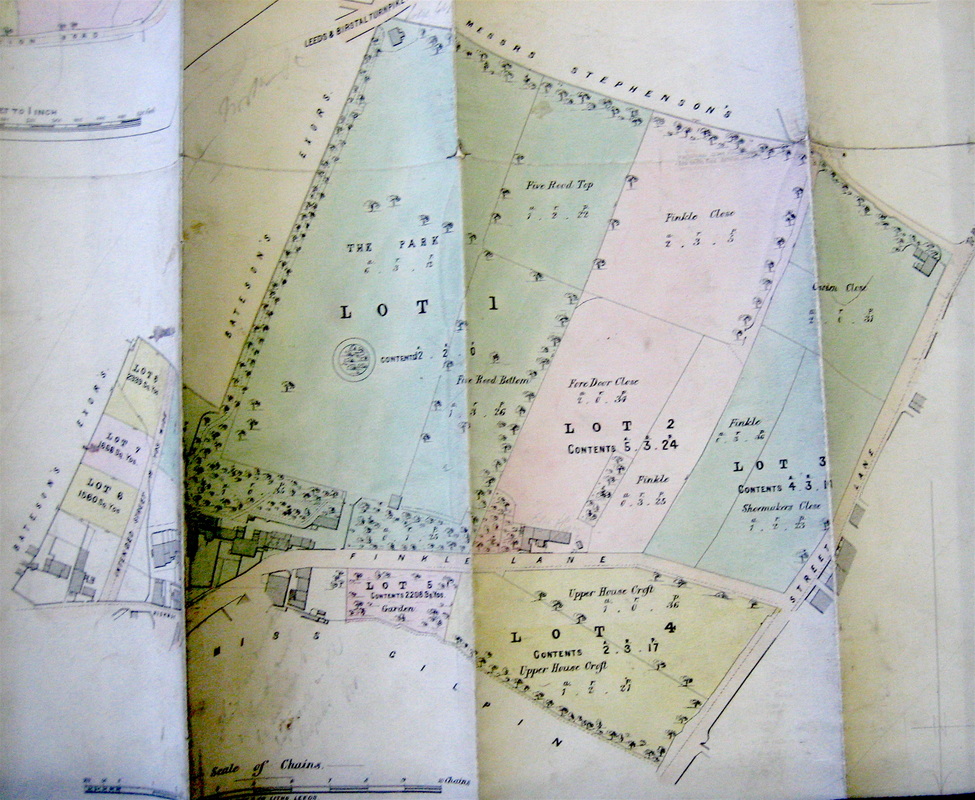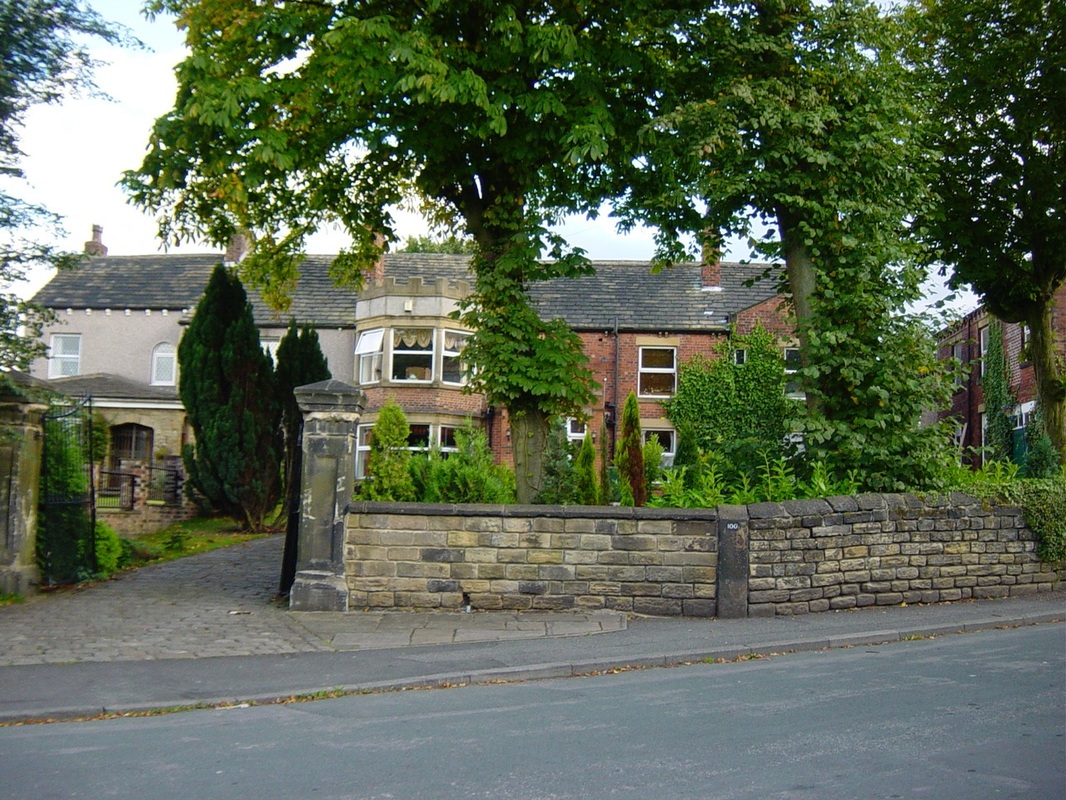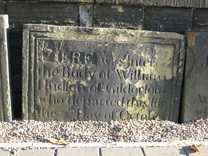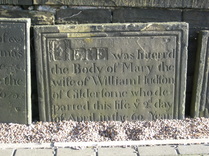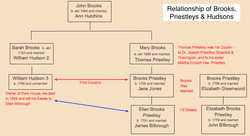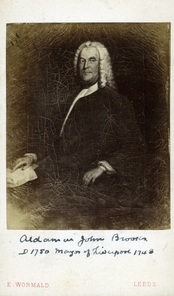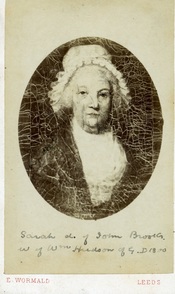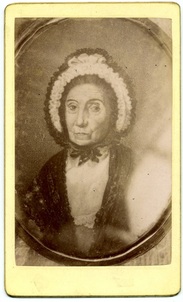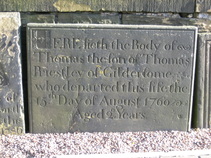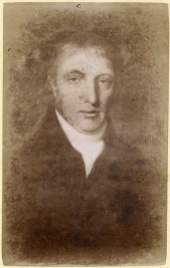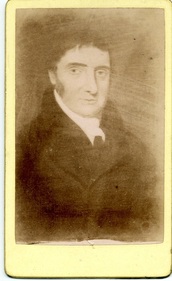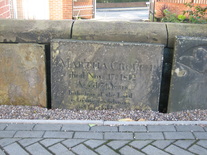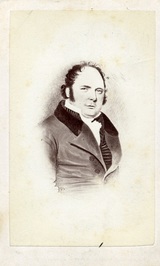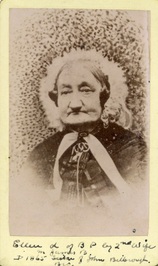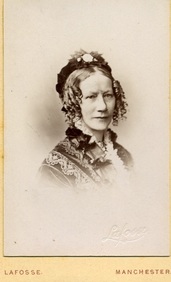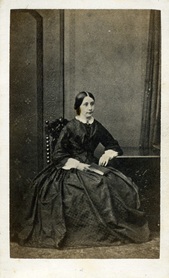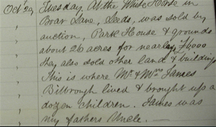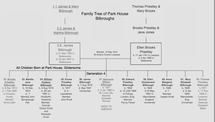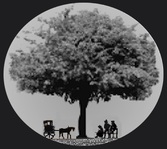|
⬆︎ Use pull down menus above to navigate the site.
|
|
Park House on Finkle Lane by Charles Soderlund © 1/5/17
Today, the main entrance to Park House is on Finkle Lane but that was not always been the case. In the past, that entrance was reserved for tradesmen, servants and casual visitors. The formal entrance to Park House was on the opposite side, the 'Park side' as it was called. It was accessed through the main gate located on Finkle near today's Health Centre. Park House had another carriage lane, called The Avenue which began behind Hudson's Nook (now a footpath) and connected with Gelderd Road which conveniently nicked a corner of the Park House property.
Today, the main entrance to Park House is on Finkle Lane but that was not always been the case. In the past, that entrance was reserved for tradesmen, servants and casual visitors. The formal entrance to Park House was on the opposite side, the 'Park side' as it was called. It was accessed through the main gate located on Finkle near today's Health Centre. Park House had another carriage lane, called The Avenue which began behind Hudson's Nook (now a footpath) and connected with Gelderd Road which conveniently nicked a corner of the Park House property.
 Another sketch by Alfred Bilbrough.
Another sketch by Alfred Bilbrough.
William Booth Bilbrough visited Park House in the 1860s, in the 1890s he wrote about the view of the Park saying:
"Looking out out of the window into the Park, and taking in at one glance, the avenue of trees to the left, the little island about 150 yards from the House, with its group of trees in the centre, and the festooned chain running round the water from pillar to pillar, and the fine Park extending as far geography, and the clusters of trees, and the nicely kept lawn which spoke of care and attention."
The Park was a lawn of about 8 acres, lined and dotted with trees. The 'little island....with the trees in the center', spoken of above, was surrounded by a moat that was fed by a 'never falling spring'. The moat was encircled by a chain held up by evenly spaced pillars of laid stone. What's left of this moat and island can be found inside the north end of Park Crescent. A few years back, children and teachers from Gildersome Primary School, along with local archaeologists, dug a trench across the location of the moat; though mostly unsuccessful in finding a trough, they did find a few objects but nothing worth noting.
"Looking out out of the window into the Park, and taking in at one glance, the avenue of trees to the left, the little island about 150 yards from the House, with its group of trees in the centre, and the festooned chain running round the water from pillar to pillar, and the fine Park extending as far geography, and the clusters of trees, and the nicely kept lawn which spoke of care and attention."
The Park was a lawn of about 8 acres, lined and dotted with trees. The 'little island....with the trees in the center', spoken of above, was surrounded by a moat that was fed by a 'never falling spring'. The moat was encircled by a chain held up by evenly spaced pillars of laid stone. What's left of this moat and island can be found inside the north end of Park Crescent. A few years back, children and teachers from Gildersome Primary School, along with local archaeologists, dug a trench across the location of the moat; though mostly unsuccessful in finding a trough, they did find a few objects but nothing worth noting.
|
In 1865, Ellen Bilbrough, née Priestley, was owner of Park House. She died that year and according to her will, the entire Park House estate would be sold at auction with the proceeds being divided equally between her nine surviving children. Besides Park House and the Park, the estate consisted of 14 other fields and ten houses or cottages. When the auctions concluded, the entire estate sold for over £6,000.00 (£42,000 in today's money. The core properties of the estate were sold to Robert and Rowland Holliday, both living in Gildersome, and were described in the conveyance as "Coal Proprietors" The core properties are shown on a portion of a 1867 Plat drawn up by Michael Sheard (see right), a surveyor from Batley. The main components of the Park House Mansion were described thus:
"Lot 1: A Dwelling-house called PARK HOUSE situate in Gildersome, with out-kitchen, mangle room, brewhouse, granary, barn, two coach houses, two stables, mistal¹, and other outbuildings, fruit walls, gardens, lawn, shrubberies, yard, and stack garth thereto belonging, as now occupied by Miss Bilbrough and others. Also the PARK in front of the said messuage or dwelling-house...... Park House contains on the ground floor an entrance hall, dining room, drawing room, breakfast room, library, two kitchens, two larders and coal house; on the first floor six bedrooms and a water closet; with attics, and wine, meat, and beer cellars. The kitchen and out-kitchen have pumps, which communicate with a never falling spring, and there are three cisterns for storing rain water. The house contains numerous fixed cupboards, mantlepieces, stoves, gas fittings, and other fixtures, all of which will be sold with the property." |
Park House and the Hudsons
|
William Hudson I, was born in Baildon near Bradford in 1690 and died 1749. How he came to Gildersome is speculation but it was said that he had a business arrangement with Nathaniel Booth, merchant and clothier of Gildersome. Hudson married Mary Booth (1687-1747), Nathaniel's cousin. Hudson was a well to do clothier and merchant who was also a co-founder of Gildersome’s Baptist Church. William and Mary had three daughters and a son William Hudson II, (1722-1779). William bought a farm in the Nook from John Appleby in 1740 and there erected the first of the Park House buildings. It's been rumored that Mary Booth had Park House built for her son, William II, but there's no proof of that. The "Eye Map of Gildersome 1739" (right) contains a farmstead that's situated near where Park House sits today, presumably the Appleby land.
Presumably William Hudson II carried on his father's businesses. His prospects improved dramatically after he married Sarah Brooks (1723-1800) of Liverpool in 1754. Sarah's parents were John Brooks and Anne Hutchens. John Brooks was a wealthy and enterprising trading merchant who became an Alderman on the Liverpool City Council before becoming Mayor in the years 1743 and 1744. He and his wife raised eight children. Sarah's sister Mary, met and married Thomas Priestley in 1753, he was born at Field Head, Birstall and was 1st cousin to Joseph Priestley the scientist. Priestley took his new wife to Gildersome and that's no doubt how Sarah Brooks and William II met. In little more than a year and a half after Mary married Thomas, Sarah and William II were wed in Liverpool and like Thomas, William brought his bride to Gildersome. Sarah was no country girl and was used to the grand architecture and social life of Liverpool. I believe Sarah was determined to turn Park House into an impressive manor worthy of her station in life. How long the renovation of the Park House estate took until it resembled the property that was sold in 1867, who can say? I believe it was mostly completed by 1780. Sarah lived 47 years after her marriage so she had plenty of time. The couple had only one child, William Hudson III, in 1756. Sarah also came with connections to the Liverpool wool trade, connections that would endure and benefit not only her only child William Hudson III but the Bilbrough family as well. Hudson II built his own cloth warehouse, near Park House in the Nook, where the Co-op stands today. From then on, many local cloth makers in the vicinity bypassed Leeds and sold directly to Hudson instead. Hudson would then ship the cloth to Liverpool, to his Brooks family connections, for import to foreign markets. Wlm. Radford Bilbrough wrote that William Hudson II was, “one of the trustees of the “Chapel and land, minister’s house etc”, (he) carried on his business of merchant in the village & supplied people far & near with wool, oil, woolen cloth, sugar, rum & brandy; in his a/c (accounts) book I find that in 1750 he paid for Beef & Mutton 2d per lb.” Hudson II expanded a mercantile presence at the “Nook” and eventually, all of his enterprises were situated there. There was the Cloth Hall or the “Piece Chamber” as it was known, John Wesley was said to have delivered a sermon there, a drysaltery and grocer’s shop, no doubt he sold hardware as well. William died in debt 1779; most likely due to the shutdown of American markets during its revolution. It was hard times for the Widow Hudson and her son William but in 1788, she received a generous annuity from her wealthy brother, Joseph Brooks of Liverpool. The will also stipulated that her husband's debts, now her own, be paid off in full and that her annuity would pass to her son William after Sarah's death. Sarah died in 1800 and William Hudson III inherited Park House when Sarah passed. Life changed little, William III carried on pretty much as his father, maintaining the woolen cloth imports, drysaltery and other mercantile pursuits. He collected rents from all his tenants, either for fields or cottages. Philip Booth wrote, “He was certainly in his time the most prominent man in the village and took a great interest in the educational well-being of the young men of the place. My Uncle Edwin, my father, and in fact all my relatives spoke of him in the highest possible terms and were indebted to him for a good deal of the interest they had in literature. He was a bachelor and lived at Park House, in the Piece Chamber of which (now pulled down) he used to gather the people together for instruction on Sunday evenings. It seems strange that the 3 generations of Hudsons are unnoticed by Scatcherd in his history. His property passed into the hands of the Bilbroughs.” "When without Minister, Mr. Hudson sometimes read a sermon in the pulpit, and one Sunday when his sermon had been on Charity, Mrs. Crouch his housekeeper, sister to Dr. Priestley said “Mr. Hudson, you have given us a good sermon on Charity, I wish you would follow it up by inviting old Judith (a poor woman who came some distance to Chapel) to dinner.” He did so and ever after old Judith had her Sunday dinner at Mr. Hudson’s.” Martha Crouch, Hudson's housekeeper, died in 1812. Park House and the Bilbroughs Brooks Priestley (1756-1816), was the son of Thomas Priestley, mentioned above, and also first cousin to William Hudson III. He worked in the Customs House at Liverpool and operated his own import/export business on the side; exporting woollen goods to the Americas and importing cotton in return. As a clothier, William Hudson III sent his woollen products, collected from Gildersome manufacturers, to Brooks in Liverpool. Priestley had such respect for William Hudson, that he named one of his sons William Hudson Priestley. Priestley visited Hudson frequently and often brought his two daughters Ellen and Elizabeth. It was on such an occasion that Ellen Brooks Priestley (1791-1865) met James Bilbrough. James Bilbrough (1782-1847) was born at Harthill House, Gildersome, the sixth child out of ten born to James and Martha Bilbrough. In his early years he learned the various occupations of his father, i.e. malting, farming, and cloth making. His mother was a Baptist and James was brought up in that faith and he no doubt attended Gildersome Baptist Church as did his other siblings. I don’t know too much about James’ early life so I’ll let William Radford Bilbrough continue the tale...... “.....He went to the school kept by Quaker Ellis in Gilead House, a good school, with day scholars and borders. It stood on high ground overlooking Farnley Wood. The school was not far from home, though out of sight, the way being over the hill top. Across “The Green” lived William Hudson, a bachelor, the third of the name, whose Grandfather and Father had lived in the same spot known as Park House. The entrance to which was from the Nook. William Hudson was a Drysalter and had a warehouse close by his house, but since the death of his uncle Joseph Brooks in 1788 he had been independent of business, as he not only had his ancestral estate of 26 acres where he lived, but an income for life of ₤500 a year. Days passed very quietly, and it was a pleasant change for him who had no company at home to slip through the ginnell and cross the Green to Bilbrough’s where he often spent an hour or two in the comfortable, clean and airy room known as “the Parlor”. He enjoyed many a chat with James and Martha Bilbrough and took an interest in their healthy, active and intelligent family. He noticed the fine young lads, and proposed that one of them should go and help in his business. John went first, but after a trial, thought he could be more useful at home. So it was suggested that his Brother James might go to Hudson’s. James was a cheerful good natured fellow who pleased William Hudson. He was very attentive and polite, and one that William Hudson liked to have about the house.......” It was about 1800 that James Bilbrough went to work for the bachelor William Hudson. Some sources say that he was employed as Hudson’s valet and others say that he was his assistant. Whatever the relationship was, the performance of his duties must have been exemplary for it endeared him to Mr. Hudson. A trust developed between the two for, as we shall see, Hudson treated James as if he were his own son. William Booth Bilbrough b. 1839, wrote this about what occurred: “....Martha’s son James, who became manservant to Mr. Hudson, had by his learning and devotion to his master, made a very favorable impression upon that Gentleman and who, by 1811, became to regard James as indispensable. For this valet of Mr. Hudson was rather tall and commanding, of good figure and address, and a personage calculated by his refinement to capture the hearts of the weaker sex. Mr. Hudson, I think, used to do business in the City of Liverpool, and he had some friends who used to reside there. And those friends of his were sometimes invited to Gildersome, to Park House. And Mr. Priestley and his daughters have spent many happy hours in the society of Mr. Hudson, who highly appreciated those visits, and was mightily pleased with the behaviour and conversation of those young ladies. And he had almost conceived the affection of a father towards Ellen, Brooks Priestley’s fourth daughter. And James Bilbrough was not slow to make himself agreeable to those two young ladies, and Mr. Priestley narrowly watched this young Bilbrough and thought this young valet of his friend, Mr Hudson, was too liberal in his attentions towards his daughters and too neglectful as regarded his master. Let us hear how he expressed himself before Mr. Hudson, “I wonder what that big dragoon means by promenading about with my daughter?” No third person heard Mr. Hudson’s reply.......” William Booth Bilbrough continues with an imaginary dialog between Hudson and Priestley, based on the facts as they happened. Priestley was upset when James asked for the hand of his daughter, Ellen, but Mr. Hudson acted as advocate for James. Hudson extolled the virtues of the hard working Bilbrough family and the position they held in the village as well as the good nature and character of James himself. He told Priestley that, as a bachelor, he had no heir and that if he would agree to the marriage, he would leave the Park House Estate to Ellen and, since he was already considering a partnership with James in his various businesses, he would leave those businesses to James upon his death. This greatly mollified Priestley as the entire Estate was worth over ₤1000 per year, and consent was given. The marriage took place 10 September 1812 at St. Anne’s Church, Liverpool. The happy couple returned to Park House, Ellen to assume the roll of housekeeper and James as partner to Hudson in all his enterprises. Less than a year later, in May 1813, Ellen's sister, Elizabeth Priestley, married John Bilbrough of Harthill House. Almost one year later to the day, James and Ellen were blessed by the birth of their first child, Brooks Priestley Bilbrough, named after Ellen’s father. Then Martha Jane Bilbrough, a daughter named for James’ mother and Ellen’s sister, Jane. William Hudson Bilbrough was born in 1816, named in honor of the master of Park House. All in all, James and Ellen had 12 children together, all born at Park House. William Hudson retired around 1818 and turned his businesses over to James. These included drysalting establishments in Gildersome and Mill Hill, Leeds, the farming operations around Park House and a clothier operation located at the Cloth Hall in the Nook. James also became vested in his brother’s, Joseph and Samuel, woolen cloth export scheme. Around 1810, they were manufacturing finished woolen products in Gildersome and using Hudson and Priestley’s connections to sell to the lucrative American markets. Samuel left for America in 1814 and by 1820 they had a shop in Philadelphia in Christ Church Alley. In 1821, James took ship to Philadelphia to inspect the Bilbrough Brothers warehouse. Accompanying James was his nephew Thomas. James didn’t stay long, his son Edward was born Oct 1822. In December of 1829, William Hudson passed away. He was buried in front of Gildersome Baptist Church where the driveway now exists. If his stone has been removed to another location, it certainly is not visible today. Philip Henry Booth, again in his “History of Gildersome” wrote this about the grave site: “....The grave is the only one with palisades round it which however seem to be rusting away....” the stone read: “In memory of William Hudson Esq. of Gildersome who departed this life 6th of December 1829 aged 73 years. Here the wicked cease from troubling and here the weary be at rest.” William Radford wrote this about the death of William Hudson: “on 6th Dec 1829 Wlm Hudson died, aged 73. His grave is in the Baptist Chapel Yard, and is surrounded with tall iron railings. His tastes had been those of a quiet, thoughtful country gentleman, and during the last 16 years of his life, he was astonished at the number of young faces that appeared in his house. When informed of the latest arrival, with a look of surprise and resignation, he would exclaim, “What ____another?”. He lived to see ten of them who were all taught to call him “Grandpa”, and he was pleased to see them growing up a fine and healthy family.” From “Chronicles of My Ancestors” by William Radford Bilbrough writing on the occupation of Park House by the Bilbroughs wrote: “Of the ten children of my Great Grandfather, James Bilbrough, besides those already described, two sons got on so well that they each lived in a good house surrounded by their own land. The houses were on opposite sides of the Green. John, my Grandfather was a thorough man of business and by his industry and perseverance he gathered together no mean fortune. His brother James was a very good tempered man and early went to help Mr. Hudson. He afterward married Ellen Priestley whose father was cousin to Mr. Hudson and by this step he secured his prosperity, for Mr. Hudson died a bachelor and left his house and estate to her. Thus they came to live in two of the best houses in the place and spoke of visiting “the other house” as if there were only one. John had five children and James twelve and in those days they were constantly having their parties and other plans of enjoyment together. As the families grew up and got married, they left the Village until, at the death of Mrs. James Bilbrough her estates were sold. Of these two families, Alfred Bilbrough alone remains in the Village of Gildersome. The above James Bilbrough married Ellen, daughter of Brooks Priestley and his second wife and always afterwards lived at Park House. He carried on business in a warehouse in Mill Hill, Leeds as Oil Merchant and Drysalter. Mr. Hudson lived with them until his death and left them his property and an annuity of £500 (some of this went to Aunt Nelson as next of kin) which he enjoyed during his life and reverted to his blood relatives at his death (see the will of Joseph Brooks). Mrs. James Bilbrough, at her death, left all her real and personal estate to be divided equally among her 9 children, the furniture, etc, in the house to be divided between her two unmarried daughters." “In 1810 or 11, Mr. Wm Hudson of Park House Gildersome went to London and with him went John and James Bilbrough. John being about thirty years old and and James twenty eight, neither of them were married. This was the only time John was in London and he talked of it and related what happened to them on their memorable stage coach journey all his life after. He was much struck with the fine large lettuce they had to eat in London. They went to Fauxhall Gardens and he was much astonished at what he saw there. Their journey was for pleasure only.” “......as the years went on many were the parties these two families had together. They often crossed “The Green” to the “Other House” and on Sundays they went to the “Home of God” in company and walked home together in fine weather (thru the Ginnel) and took a stroll round the Park before they separated and went to dinner.” “......At Aunt Bilbrough’s Park House, when her family were grown up and a few of their relations and others came to a party, they would have a Country Dance in the dining room and now and again a couple would spin out of the door and along the passage. Mrs. Booth (mother of Alfred Booth, Bachelor of Gildersome 1893) used to relate how from her cottage window on a Sunday, she had many a time watched the family of James Bilbrough go to chapel, They went very punctual, almost to a minute, and they walked in due order, the large family two and two followed by Mr. and Mrs. Bilbrough” James Bilbrough died in 1847 and Ellen in 1865. The 1861 census shows that only Ellen Brooks Priestley Bilbrough and her two daughters Ellen Donbavand and Mary Elizabeth were still living at Park House; Ellen's other surviving children had moved on. Daughter Ellen D. handled the sale for the estate and when that was concluded, She and her sister Mary moved to Bury, Lancashire outside Manchester. In his "History of Gildersome" Philip Booth wrote: Miss Ellen D. Bilbrough another member of the family started the temperance cause in the village, and before the days of trained nurses went about the place as an angel of light. It was a source of great regret to us when the Park House estate was sold and she left Gildersome.' In 1868, the Park House core was sold to the Hollidays. To read more about them and Park House go to: Park House Documents
|
|

